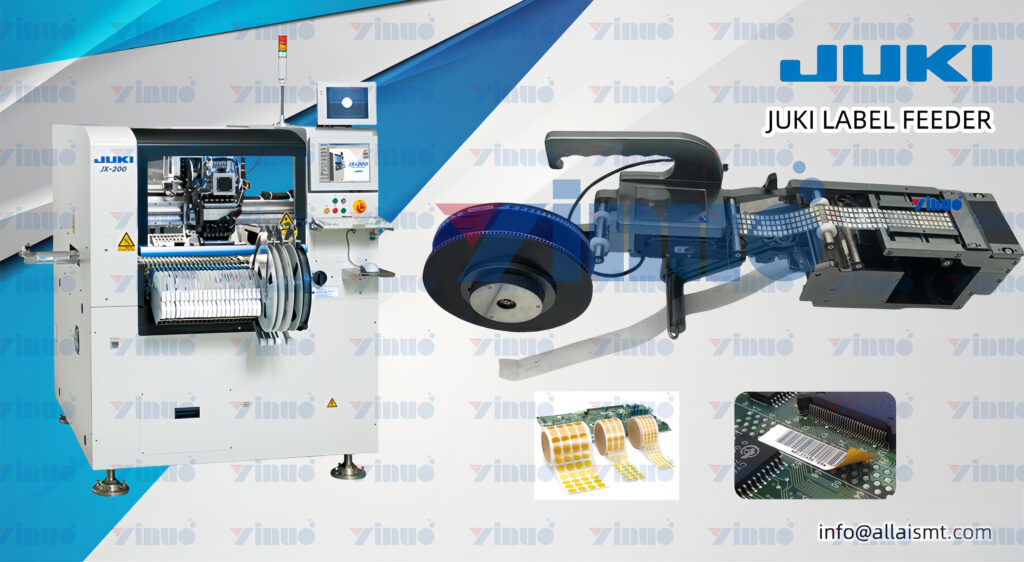Label Feeders: Ensuring the Consistency of Certification Labels
In today’s highly regulated industries, certification labels are not just optional markers—they are essential symbols of compliance, safety, and quality. These labels serve as proof that products meet the stringent standards set by regulatory authorities, industry bodies, or third-party certifiers. From energy ratings and safety certifications to organic labels, these marks are crucial for consumer trust and market acceptance. Ensuring the consistency and accuracy of these labels is paramount, and label feeders are the automated solution that guarantees flawless application every time.
The Critical Role of Certification Labels
Certification labels carry significant weight in various industries. They provide consumers with essential information, such as safety standards, environmental compliance, and quality assurance. In sectors like electronics, food and beverage, pharmaceuticals, and construction, these labels are often mandatory. They not only affirm that a product meets regulatory requirements but also play a key role in influencing purchasing decisions.
Inconsistent or incorrect application of certification labels can lead to serious consequences, including legal issues, product recalls, and damage to a brand’s reputation. Therefore, ensuring that these labels are applied consistently across all products is critical.
Challenges of Manual Certification Label Application
Manually applying certification labels poses several challenges:
- Human Error: Manual application is prone to errors, such as misalignment, incorrect placement, or even missing labels. These mistakes can compromise the product’s compliance and quality perception.
- Inconsistency: Achieving uniform label placement across large batches of products is difficult with manual methods, leading to variability that can affect regulatory compliance and brand image.
- Time-Consuming: The manual application of certification labels is labor-intensive and slow, especially when dealing with high volumes of products, leading to inefficiencies in the production process.
Given these challenges, automating the labeling process with label feeders is a strategic move for any company looking to ensure consistency and compliance.
How Label Feeders Enhance Certification Label Consistency
1. Precision and Accuracy
Label feeders are designed with advanced technology that ensures each label is applied with exact precision. This precision is crucial for certification labels, which must be clearly visible and correctly positioned to meet regulatory standards. Label feeders use sensors and positioning systems to align labels perfectly on each product, eliminating the common issues associated with manual application.
2. Uniform Application Across All Products
Consistency is key when applying certification labels. Any deviation in label placement can lead to regulatory challenges and consumer distrust. Label feeders ensure that every product in a production run receives its certification label in the exact same location and orientation. This uniformity is essential for maintaining compliance and delivering a professional, reliable product to the market.
3. Efficiency and Speed
Label feeders significantly increase the speed of label application compared to manual methods. This efficiency is especially valuable in large-scale production environments where time is of the essence. Automated label feeders can apply labels at high speeds without sacrificing accuracy, helping companies meet production deadlines while ensuring compliance with certification requirements.
4. Error Reduction
By automating the labeling process, label feeders drastically reduce the potential for human error. This automation is particularly important for certification labels, where even a small mistake can have serious consequences. Label feeders are equipped with features like error detection and real-time adjustments to ensure that each label is applied correctly, reducing the risk of non-compliance.
5. Adaptability to Various Label Types
Certification labels come in various shapes, sizes, and materials, depending on the industry and the specific requirements. Label feeders are highly adaptable and can handle a wide range of label types, ensuring consistent application regardless of the label’s design. This versatility allows companies to maintain high standards across different products and certification requirements.
6. Integration with Quality Control Systems
Many label feeders can be integrated with quality control systems that monitor the labeling process in real-time. These systems can detect any anomalies in label application, such as misalignment or missing labels, and take corrective action immediately. This integration ensures that all products leaving the production line are compliant with the necessary certification standards.
Benefits Across Industries
Label feeders are used in a variety of industries to ensure the consistent application of certification labels:
- Electronics: For applying safety and energy efficiency certifications like UL, CE, and Energy Star.
- Food and Beverage: For organic certifications, non-GMO labels, and allergen-free guarantees.
- Pharmaceuticals: For FDA approval marks, GMP compliance, and other regulatory labels.
- Construction: For labeling products with safety certifications and environmental compliance marks.
Conclusion
Certification labels are a critical component of product packaging, signifying compliance, quality, and safety to consumers and regulatory bodies alike. Ensuring the consistent and accurate application of these labels is essential for maintaining compliance, protecting brand reputation, and building consumer trust. Label feeders provide a reliable, efficient, and precise solution for applying certification labels, helping companies meet the highest standards of quality and regulatory compliance. By investing in label feeders, businesses can achieve the consistency and accuracy needed to succeed in today’s competitive and regulated markets.

